Starting in ancient Greece as a fitness regime for war preparation, also known as gumnazo, gymnastics has come a long way. But after all the years of development & growth, the question often arises to the deck, is gymnastics a sport?
Today, we’ll explore whether gymnastics is a sport by learning about the concept of sport and arguments with & against the statement. Later, we’ll touch on gymnastics training & preparation, its types, history & health benefits.
Defining Sport

Concept of Sport
According to Clearinghouse for Sport, Sport is A human activity involving physical exertion and skill as the primary focus of the activity, with elements of competition or social participation where rules and patterns of behavior governing the activity exist formally through organizations and is generally recognized as a sport.
The concept of sport entails but isn’t limited to:
- Physical exertion
- Elements of Competition/social participation
- Observance of pre-existing rules created by formal organizations
- Uses, maintains, or improves physical ability & skills
- Providing joy to participants or spectators
However, the definition of sports varies from region to region.
For instance, the Council of Europe only admits physical games as sports. In contrast, organizations like The International Olympic Committee via ARISF recognize chess & bridge as sports.
Criteria Used to Determine a Sport
There’s no precise definition of sport; different sources rely on different aspects. However, the Global Association of International Sports Federations uses the following criteria to determine a sport:
- Element of competition
- Not harmful to any creature
- Shouldn’t rely on luck
- Not rely on equipment provided by a single supplier
What’s Gymnastics?
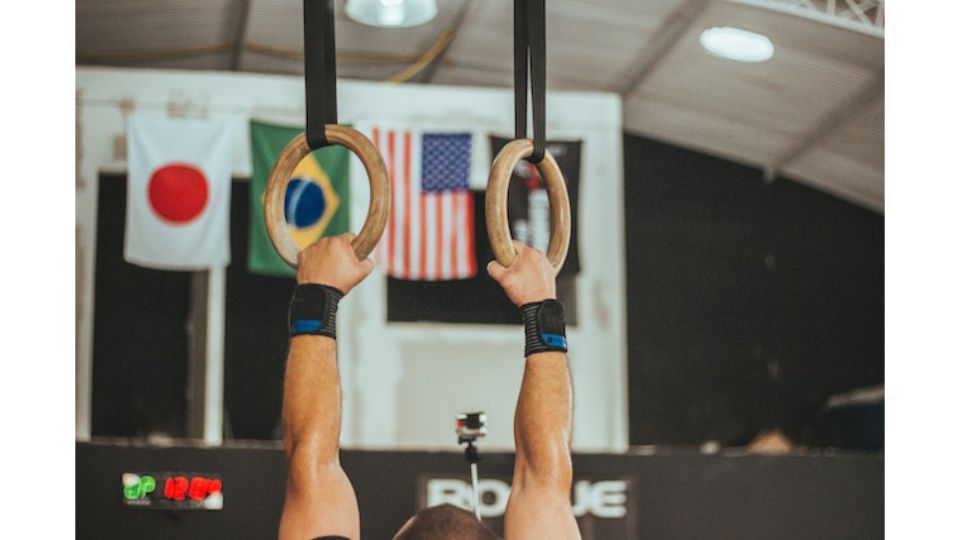
Gymnastics is a demanding sport that requires one to utilize their body’s strength, flexibility, balance, and coordination. This sport sometimes also requires the use of apparatus while performing physical routines, including bars, vault, balance beam, etc.
Gymnastics requires utter perseverance and resilience. To excel in it, gymnasts start by practicing early in their lives. The athletes have multiple ways to showcase their talent. From acrobatic movements to rhythmic movements – they do it all!
Gymnastics include flips, twists, leaps, jumps, spins, etc. The game is exciting, but it has rigorous rules. Apart from relentless training, gymnastics have a high risk of injury. But those who are passionate about it enjoy the rush of adrenaline.
Apart from being a competitive sport, gymnastics is also a popular recreational activity for people of all ages, as it boosts physical health. Additionally, gymnastics can cultivate a sense of self-confidence, collaboration, and a healthy work ethic, making it a well-rounded and rewarding endeavor.
Is Gymnastics a Sport?
Gymnastics is considered one of the most watchable sports in the Olympics.
In Tokyo 2020 Olympics round-up, the trials for gymnastics emerged as the most viewed event. The sport beat the viewership of field, swimming, and diving by over two million average viewers.
We have split this section into two to present the reasons in favor & against the question – is gymnastics a sport?
Gymnastics as a Sport: A Display of Physical Demands, Competitive Spirit, and Technical Mastery
Physical Demands
You can’t perform gymnastics without outstanding strength, coordination, balance, and flexibility. This sport mandates rigorous training to perform complex movements with accuracy and elegance.
Gymnastics requires gymnasts to possess agility, perseverance, and hand-eye harmony while emphasizing joints and requiring injury-prevention measures.
The physical marvels of gymnastics make it an exquisite sport that showcases the extraordinary capabilities of the human body.
Competitive Nature
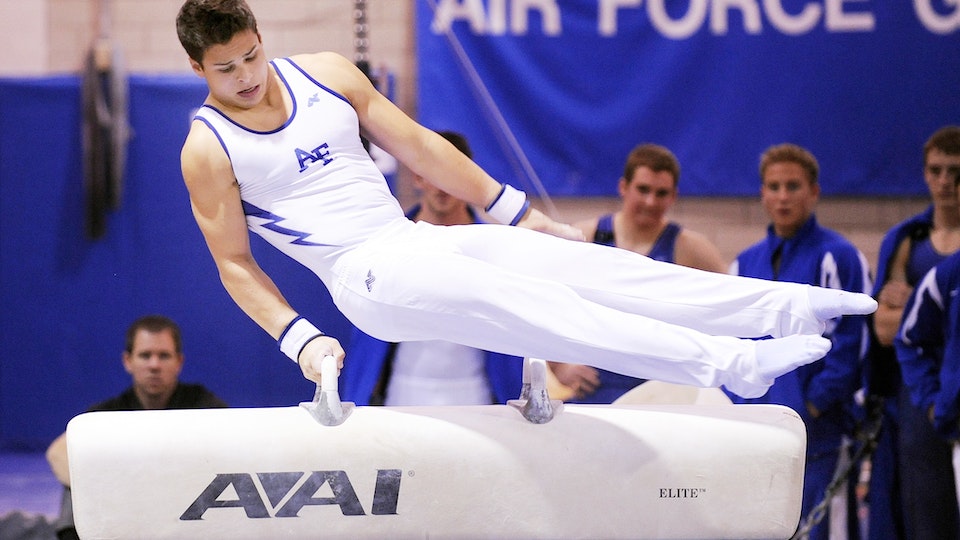
Sports are fascinating to watch due to their highly competitive nature. But gymnastics has an even higher stake as competition scores are based on execution, difficulty, and artistic presentation.
Artistry meeting sports is not an easy feat. They both require separate skill sets, and a gymnast needs to be a master of both. The game’s competitive nature challenges gymnasts to test their limits, which keeps the audience transfixed.
Defined Rules & Scoring Systems

Much like all games, gymnastics has well-defined rules and scoring systems that guarantee competition fairness.
Each gymnastics discipline has specific guidelines. Judges evaluate routines based on technical implementation, complexity, and artistic aspects. Scores are deduced over mistakes, inconsistency, clumsiness, and uneven skills.
The comprehensive regulations and scoring criteria in gymnastics are essential for a standardized framework to evaluate gymnasts’ performances. These rules promote gymnasts to aspire for greatness and ensure objective and impartial assessments during competitions.
International Recognition

Gymnastics has earned widespread international recognition. National and international sports organizations, including the FIG, recognize it as a prestigious sport.
Gymnastics is part of major multi-sport events like the Olympic Games, where it captivates global attention and exhibits the talents of gymnasts worldwide.
The best thing about gymnastics is that it is not claimed by any gender in the mainstream media. People from all backgrounds, gender, and age brackets enjoy this sport.
Contains Various Levels of Competition
Just like being a top-tier sport, gymnastics offers various tiers of competition. This sport caters to athletes of all ages and skill levels.
Gymnasts have plenty of opportunities to display their talents and progress in the sport. From grassroots and local competitions to regional, national, and international events.
Some gymnasts are only in for recreational competitions at the entry levels, while others move on to higher levels of competition, where the difficulty of skills and routines elevates.
Challenging the Classification: Counterarguments to Gymnastics as a Sport
Gymnastics is More of an Art or Performance

Many people discredit gymnastics as a sport in hushed tones. Their defense? Gymnastics is just an art or performance.
Gymnastics is a demanding sport integrating athleticism, artistry, and technical skills. While artistic expression plays a role in gymnastics routines, the sport also requires exceptional physical abilities.
Gymnasts only succeed if they can showcase their athletic prowess and technical mastery, proving their foundation lies in sportsmanship.
Subjective Judging System
Sometimes the question “gymnastics is a sport?” arises as the idea of sports is associated with sweat and grunts due to its subjective judging system.
Some critics believe that due to this, there is space for:
- Inconsistent scoring
- Artistic vigor
- Lesser chances of head-to-head competition
- Potential biases
- Ambiguity in criteria.
However, significant organizations and events still widely acknowledge gymnastics as a sport, given its demanding physical requirements and competitive nature.
Training and Preparation in Gymnastics

Training Process for Gymnasts
The gymnasts must undergo rigorous training with dedication, discipline, and perseverance. This includes:
- Skill development by practicing apparatus
- Intense conditioning exercises to build their core
- Rehearse stretching exercises to enhance their range of motion
- Learn choreographed routines for competition preparation
- Daily practice to improve muscle memory
- Participating in mock competitions
- Adequate rest and a recovery period
Dedication & Commitment
To excel in gymnastics, one needs unwavering dedication and devotion. It’s not a school project you can do on the eleventh hour; it requires countless hours of relentless training, grasping intricate skills and choreographies.
A gymnast needs to be mentally resilient to push through all the setbacks. Moreover, there is considerable potential for injury, so one needs to build their core and ensure a strict, nutritious diet without straying off the path.
Importance of Proper Coaching, Safety Measures & Injury Prevention
Almost all athletes require guidance and training, and gymnasts are no different.
Proper training is arguably more critical for gymnastics than other sports, as gymnasts deal with apparatus and physical mobility with much higher injury risks.
Safety measures are also of utmost importance to minimize the risk of accidents with the help of proper apparatus, maintenance, and spotters. This, along with executing warm-ups, conditioning, and flexibility training, massively reduces the risk of injuries and supports the gymnasts’ overall health and performance.
FIG Recognized Disciplines
FIG is the global governing entity for gymnastics, which sets competition rules, directs various gymnastics disciplines, and organizes prominent events like World Championships and Olympic Games.
Artistic Gymnastics

Artistic Gymnastics is a traditional form of gymnastics that involves short and choreographed routines performed on diverse apparatuses. All competitions start with identical scores, and participants lose points while failing to perform a move. This form of gymnastics is performed at global competitions such as the Olympics, World Championships, and Goodwill Games.
Rhythmic Gymnastics
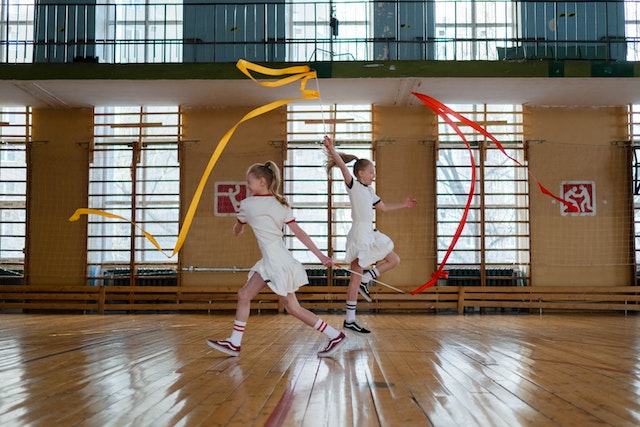
Rhythmic gymnastics is an only-women sport, where an individual or a group performs choreographed maneuvers along the music with or without an apparatus. This form is an amalgamation of ballet, gymnastics, and hop and is best done when there is a display of strength, agility, and hand-eye coordination.
Trampolining

Trampoline gymnastics can literally take you to cloud nine. This form in gymnastics elegantly defies gravity. The routine requires performing continuous acrobat movements on the trampoline, and the participant must begin and conclude on the feet. The discipline allows both separate and synchronized events for both men and women.
Tumbling

Tumbling, sometimes known as floor gymnastics, is a discipline inspired by Ancient Greeks that requires zero props. Tumblers must undergo extensive training to execute acrobatic movements such as rolls, twists, handsprings, or somersaults on the ground to showcase their strength, stamina, and flexibility.
Parkour

Parkour, or free running, is a discipline that requires one to master the art of efficiently maneuvering from point A to point B by overcoming impediments via flipping, rolling, climbing, etc. Despite not being as conventional as other gymnastics disciplines, Parkour has gained recognition from FIG.
Aerobic Gymnastics

Aerobic gymnastics, or sports aerobics, is a highly competitive discipline inspired by traditional aerobic exercise. It involves high-intensity movements and gymnastic elements performed to music. This fast-paced form blends aerobic dance with strength and flexibility elements. Routines are performed either individually or in groups.
Acrobatic Gymnastics
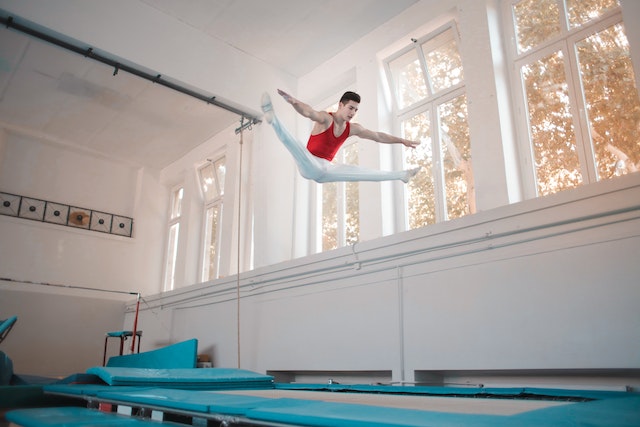
Acrobatic Gymnastics is a discipline where beat meets sports to perform acrobatic and dance moves to music. Competitions have various categories, including men’s pair, women’s pair, mixed pair, women’s groups, and men’s groups. Acrobatic routines consist of three types of performances: balance, dynamic, and combined.
History of Gymnastics
Gymnastics is not a new sport. In fact, it can be traced back to the ancient Greece era– as documented by Philostratus. Each generation has contributed to the sport’s legacy, from ancient Greece’s barefoot warriors to the modern-day gymnasts defying gravity. Let’s see how:
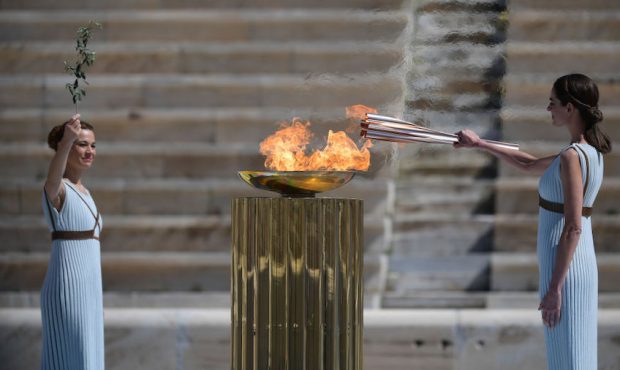
The Greece Era
Gymnastics originated in Greece during the 5th century to build combat muscles. From then, it spread its roots during the Hellenistic period and became such an essential part of Greek culture that gymnastics became a part of their education to perpetuate physical fitness and moral virtues. In fact, the word “gymnasium” came from the Hellenistic language to describe open-aired venues.
146 BC Roman Invasion
The gymnastics game changed after the fourth Macedonian War in 146 BC when the Roman Empire sponged Greek culture, including gymnastics. It was then the Romans’ turn to use gymnastics to keep their troops physically fit. Following this, gymnastics started becoming known all over the ancient world via conquests.
Spanish Colonel Introduced Gymnastics in France
Don Francisco Amorós y Ondeano, a Spanish colonel, was a visionary and a military leader who introduced educational gymnastics in France in the early 19th century when people wondered was gymnastic a sport? Following this, Gymnastics gained massive popularity in French culture. In today’s world, he’s why international competitions employ parallel bars, rings, and high bars.
German Gymnastics Movement

Friedrich Ludwig Jahn founded German Turnen Gymnastics with his friends from a Berlin school in the 1800s. It fused Gymnastics, customary games, patriotic speeches, and political philosophy to combat Napoleon’s governance.
Jahn developed the Gymnastics apparatus, and Turnverein clubs spread the practice, which led to the society’s ban. Many members migrated to the United States during this period, igniting the global spread of Gymnastics. This movement has had a lasting impact on modern gymnastics.
America’s First Wave of Gymnastics
In America, the first wave of gymnastics emerged in the mid-1800s when German immigrants brought a passion for gymnastics traditions. Turnverein clubs started emerging in various cities across the US. From here onwards, Gymnastics gained popularity in America, setting the groundwork for the growth of gymnastics as a beloved sport.
Creation of FIG
The establishment of The Federation of International Gymnastics (FIG) may be the most critical milestone in gymnastics history. This organization was founded in Liege in 1881. Following this, men’s gymnastics became part of the first “modern” Olympic Games in 1896. By 1920, women also began to participate in gymnastics events.
Role Models and Inspirational Stories in Gymnastics
Over the centuries, Gymnastics has seen many incredible gymnasts who have reached new heights of success to impact the sport significantly. These athletes are a beacon of hope for gymnastics to stay alive for many more centuries to come.
Icons of Gymnastics: Profiling Influential Gymnasts

Over the years, a plethora of Gymnasts have made history in the world of Gymnastics and left a lasting impact on the sport. Here are some notable gymnasts who have made noteworthy contributions:
- Nadia Comăneci scored a perfect 10 at the Olympic games and is a five-time gold medalist.
- Olga Korbut competed for the Soviet Union and was called The Sparrow from Minsk. She won four gold and two silver medals at the Summer Olympic Games.
- Simone Biles won seven Olympic medals with her unmatched skills.
- Kohei Uchimura won three golds and four silver medals, making him the greatest gymnast of all time.
- Larisa Latynina is the record-setter with 18 Olympic medals.
These pioneering gymnasts revolutionized the sport, brilliantly influencing gymnastics and inspiring young athletes worldwide.
Triumph Over Adversity: Inspiring Stories of Resilient Gymnasts
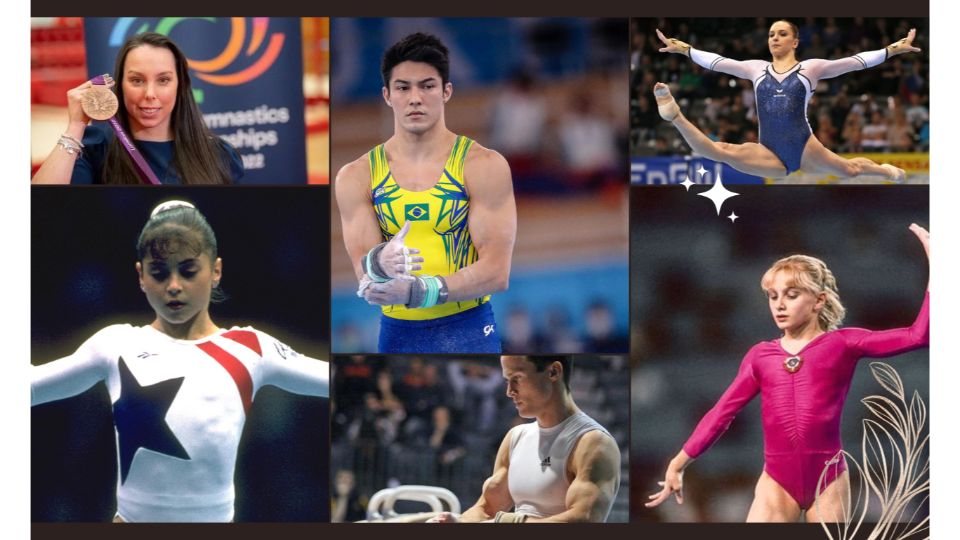
Gymnasts are not only physically strong but also mentally resilient. There are many stories of remarkable individuals who conquered challenges, achieved remarkable goals, and proved that gymnastics is a sport.
- Dominique Moceanu‘s family struggles didn’t stop her from winning the Olympic gold medal.
- Arthur Nory bounced back from injury to claim Olympic bronze.
- Beth Tweddle‘s determination won medals despite injuries.
- Paul Hamm‘s focus triumphed despite judging errors.
- Tatiana Gutsu‘s strength shone through amid political turmoil, taking the gold medal home.
- Sophie Scheder‘s resilience led to Olympic gold on uneven bars.
These gymnasts prove that perseverance and grit can turn adversity into victory, motivating gymnasts worldwide to unlock realms of success.
Is Gymnastics a Sport? Final Thoughts
To conclude, is gymnastics a sport? Of course, it is. It requires physical exertion, flexibility, skill, and concentration and is recognized by FIG as one of the most challenging sports. But, besides being a sport, it also boasts artistry, lifestyle, culture, and history. The sport brings people together and unites nations in the spirit of sports.

